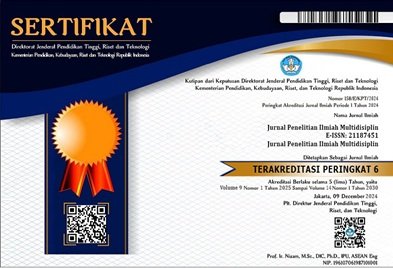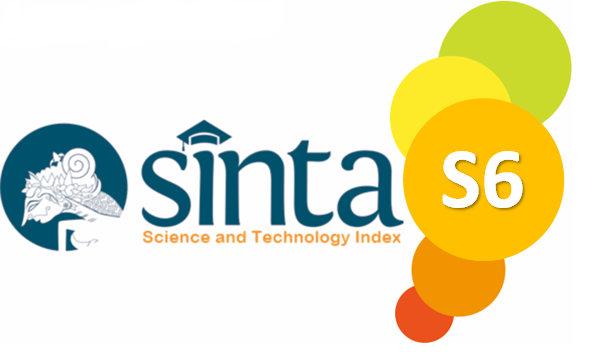PENERAPAN MODEL PEMBELAJARAN PROJECT BASED LEARNING (PJBL) UNTUK MENINGKATKAN KEMAMPUAN BERPIKIR KREATIF SISWA KELAS VI PADA PEMBELAJARAN IPAS DI SDN 027/XI KAMPUNG DIILIR
Kata Kunci:
Kemampuan Berpikir Kreatif, IPAS, Model Project Based LearningAbstrak
Skripsi ini membahas tentang penggunaan model pembelajaran Project Based Learning pada pembelajaran IPAS untuk meningkatkan kemampuan berpikir kreatif siswa di kelas VI SDN 027/XI Kampung Diilir. Penelitian ini menggunakan jenis penelitian tindakan kelas (PTK) dengan menerapkan II siklus atau putaran tindakan. Pengumpulan data pada penelitian ini menggunakan instrument tes dan instrument non tes, menggunakan indikator berpikir kreatif dan instrument non tes berupa lembar observasi pengamatan aktivitas guru dan siswa dalam pembelajaran dengan menggunakan model Project Based learning (PjBL). Hasil penelitian ini menunjukkan bahwa ada peningkatan kemampuan berpikir kreatif dalam pembelajaran IPAS dengan menggunakan model Project Based Leaning(PjBL), hal ini dibuktikan dengan peningkatan persentase hasil tes dari siklus I ke siklus II. Pada siklus I hasil tes pada mata pelajaran IPAS berdasarkan indikator berpikir kreatif pada kategori sangat kreatif pada indikator berpikir lancer dengan persentase 61,1%, indikator berpikir luwes dengan persentase 78,84%, indikator keaslian dengan persentase 73,3% dan indikator elaborasi dengan persentase 72,2%. Sedangkan di siklus II hasil tes pada indikator berpikir lancar dengan persentase 94,4%, indikator berpikir luwes dengan persentase 93,3%, indikator keaslian dengan persentase 79,5%, dan indikator elaborasi dengan persentase 83,3%. Peneliti menyarankan agar guru di SDN 027/XI dapat menerapkan model ini agar siswa lebih tertarik dengan pembelajaran.
This thesis discusses the use of the Project Based Learning learning model in science learning to improve creative thinking skills of students in grade VI of SDN 027/XI Kampung Diilir. This study uses a type of classroom action research (PTK) by implementing II cycles or rounds of action. Data collection in this study used test instruments and non-test instruments, using creative thinking indicators and non-test instruments in the form of observation sheets of teacher and student activities in learning using the Project Based Learning (PjBL) model. The results of this study indicate that there is an increase in creative thinking skills in science learning using the Project Based Learning (PjBL) model, this is evidenced by the increase in the percentage of test results from cycle I to cycle II. In cycle I, the test results on the subject of science and natural sciences based on the creative thinking indicator in the very creative category on the fluent thinking indicator with a percentage of 61.1%, the flexible thinking indicator with a percentage of 78.84%, the originality indicator with a percentage of 73.3% and the elaboration indicator with a percentage of 72.2%. While in cycle II, the test results on the fluent thinking indicator with a percentage of 94.4%, the flexible thinking indicator with a percentage of 93.3%, the originality indicator with a percentage of 79.5%, and the elaboration indicator with a percentage of 83.3%. The researcher suggests that teachers at SDN 027/XI can apply this model so that students are more interested in learning.





